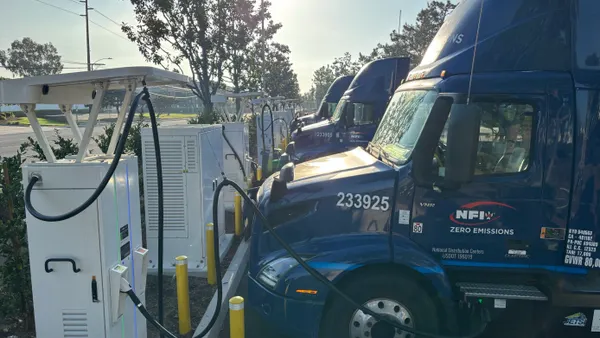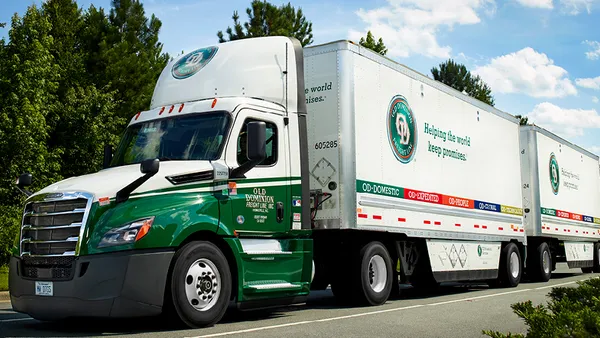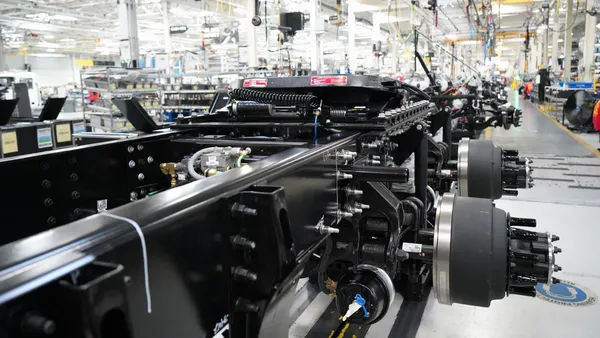Lanny Fleming began his career with Roadway Express in 1977. He was with American Freightways and FedEx Freight for 20 years, and UPS Freight for six.
We are all too familiar with organizational silos. To create a collaborative environment, walls between departments must be torn down to create a transparent flow of information and ideas. However, bringing down those barriers may be easier said than done unless people can look past individual gain for a prize that benefits everyone.
Just as silos are ubiquitous to the Midwest landscape, departmental silos may stubbornly operate independently from other units without regard for the established functional needs, requirements and operational norms of the organization as a whole. We’ve cursed them at times and unwittingly supported them on other occasions.
Organizational silos typically don’t form with the intention of isolation of function and thought. Nor are they created with purpose to undermine other departments within an organization. But, as teams own views and definitions of mission and success develop, they can easily become misaligned with those of the organization. In becoming ever-more bureaucratic, success of the individual function becomes the primary focus.
At one time in my career, I was assigned by the SVP of sales to develop a particular foreign market. Success required cooperation between the corporate, field, and inside sales teams. I recall one of the directors refused to participate because they had their own established goals and priorities. In my view, the success of the organization in developing a new market did not appear to be a priority to this director who was not looking at the broader picture.
This occurs frequently when weighted financial incentives exist. Some people become fixated on the goal that provides the greatest personal rewards while ignoring the target that yields broad-ranging benefits.
My preference is to view these not as silos but as bubbles. While bubbles can be as rigidly solid as a silo, they can also be soft and pliable. This pliability suggests they can be penetrated and/or re-shaped. But more importantly, overlap in productive intersection.
While most silos are impenetrable by sight, bubbles are abundantly clear and transparent. Every element and activity within the bubble can be easily viewed and evaluated.
You may recall when blowing soap bubbles with a child or, more recently for me, a grandchild; on occasion bubbles will emerge from the magic soap wand attached to one another.
It’s this image that represents the hope of deconstructing silos to be replaced with overlapping and perhaps intersecting organizational bubbles.
This is important to an organization for a myriad of reasons.
Organizations with distinct silos operating independently will find themselves in frequent, if not constant, conflict and organizational confusion.
For instance, from the pricing silo comes a new surcharge published into the rules tariff without remembering to inform sales, operations or customer service. Chaos ensues when customers begin pushing back and that may lead to confusion, which benefits no one.
Sometimes the operations silo suspends service in a direct delivery area without notice or, even worse, changes the service designation from direct to indirect. Given discounts generally apply to direct service points only, sales, customer service and accounts payable are thrown into chaos. Sales departments, customer service and accounts payable have all contributed to the problem as well. The sales silo focuses on geographic areas that operations isn’t prepared to service. The customer service silo cuts hours or re-assigns dedicated agents without notice to sales or the customer. The accounts payable silo decides to become stricter on payment terms and starts sending more invoices to collections without notice to sales.
Does this scenario sound familiar? I could share more examples but I think my point is clear.
Consider if the opaque silos were translucent bubbles? Imagine if an organization better communicated its mission/vision cross-functionally and placed greater emphasis on the success of the organization versus department? Then what if they cross-vetted KPIs and other departmental development goals to prevent potential conflicts? I believe individual silos that could sink an organization could be replaced with intersecting bubbles that can float an organization to greater productivity and profitability.











